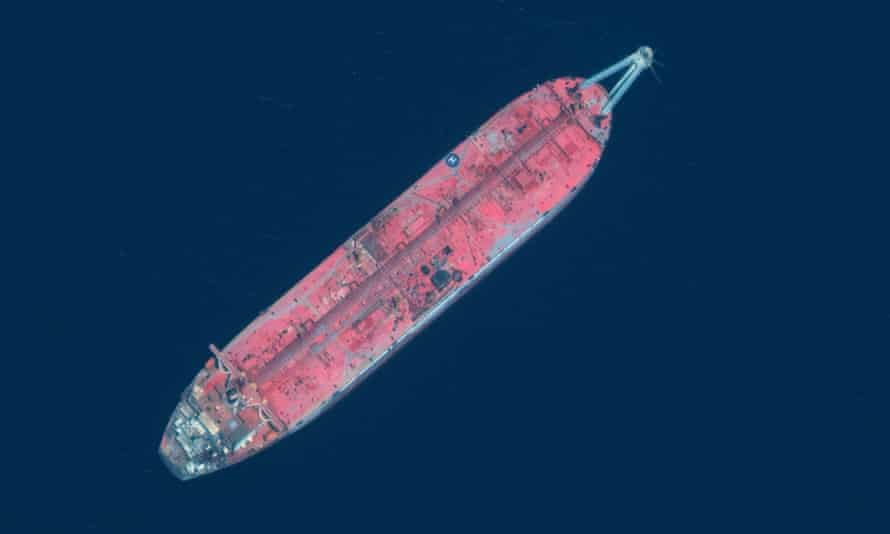Rotting Red Sea oil tanker could leave 8m people without water
FSO Safer has been abandoned since 2017 and loss of its 1.1m barrels would destroy Yemen’s fishing stocks

The impact of an oil spill in the Red Sea from a tanker that is rotting in the water could be far wider than anticipated, with 8 million people losing access to running water and Yemen’s Red Sea fishing stock destroyed within three weeks.
Negotiations are under way to offload the estimated 1.1m barrels of crude oil that remains onboard the FSO Safer, which has been deteriorating by the month since it was abandoned in 2017. The vessel contains four times the amount of oil released by the Exxon Valdez in the Gulf of Alaska in 1989, and a spill is considered increasingly probable.
The oil will spread well beyond Yemen and cause environmental havoc affecting Saudi Arabia, Eritrea and Djibouti, according to the latest modelling, which is unlike previous studies because it examines the impact more than a week after the spill.
Three-way talks between the Houthi rebels, the UN-recognised government of Yemen and the UN have foundered, despite repeated warnings, including at the UN security council, of the impact if the tanker explodes, breaks up or starts leaking. UN officials have been unable to secure guarantees to maintain the vessel, including its rotting hull, which is now overseen by a crew of just seven.
The modelling is published in the journal Nature Sustainability on Monday and showed the spill was likely to lead to the closure of the Red Sea ports of Hodeidah and Salif within two weeks, threatening delivery of 200,000 tonnes of fuel for Yemen, the equivalent to 38% of the national fuel requirement. Fuel prices are likely to rise by as much as 80%, and the absence of fuel for water pumps will result in 8 million Yeminis being deprived of running water. As many as 2 million will lose access to water if desalination plants in the region become polluted.
Although half of the oil is anticipated to evaporate on the sea within 24 hours, the rest will within six to 10 days reach Yemen’s western coastline, and ports further south in three weeks.
The numbers in need of food assistance vary from 5.7 million to 8.4 million people, depending on whether the spill reaches ports in the south, such as Aden. The estimates depend on the season when the the spill occurs and the extent of the oil loss.
The spill will threaten 66.5%-85.2% of Yemen’s Red Sea fisheries within one week, and 93.5%-100% of those fisheries within three weeks, depending on the season.
The effects of air pollution from a spill, including increased risk of cardiovascular and respiratory hospitalisations, range across 11.3m person-days for a slow-release winter spill to 19.5m person-days for a fast-release summer spill.
Red Sea coral reefs, which have been studied for their unique resilience to seawater warming, would also be threatened.
The report in Nature Sustainability warns: “The spill could hinder global trade through the vital Bab el-Mandeb strait, 29 km wide at its narrowest point, through which 10% of the global shipping trade passes. Exclusion zones created for clean-up could reroute traffic, and shipments will be delayed as ships potentially exposed to oil will require cleaning”
It adds: “The possibility of a spill is increasingly likely. The visibly dilapidated Safer is single-hulled, meaning a breach will cause the onboard oil to spill directly into the sea. Water entered the engine room in May 2020 through a seawater-pipe leak, and the vessel’s fire extinguishing system is non-operational. A spill could occur due to a leak or combustion.
“A leak could arise through continued deterioration of the vessel’s hull or by breach of the hull due to inclement weather; combustion could occur through build-up of volatile gases aboard the vessel or direct attack on the vessel.”
The UN has been seeking Houthi permission to inspect the ship, but the Houthis want undertakings that the vessl will also be repaired, an exercise that requires money the UN does not have available.